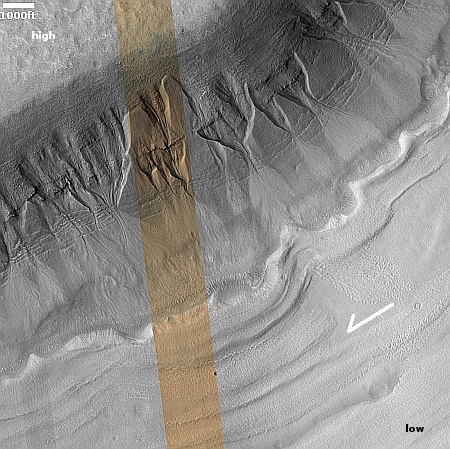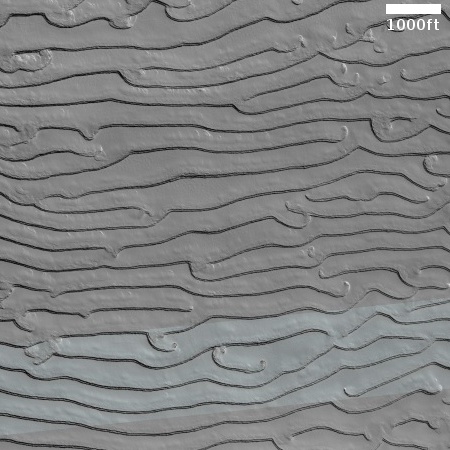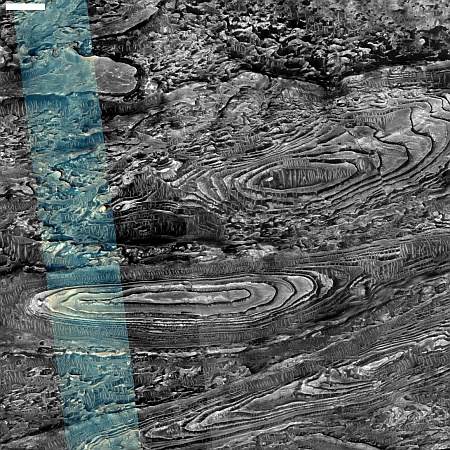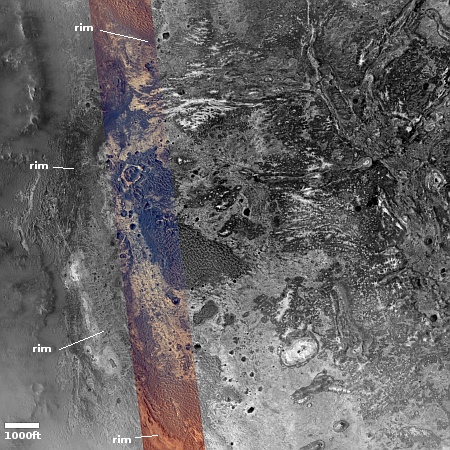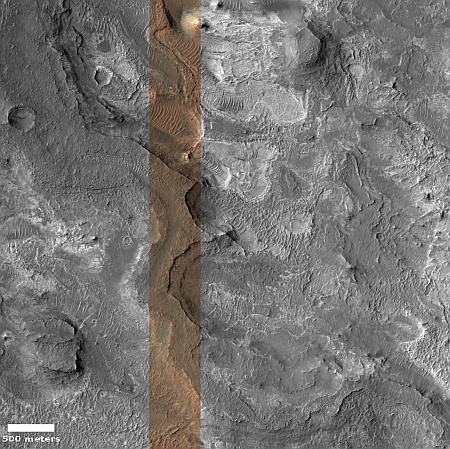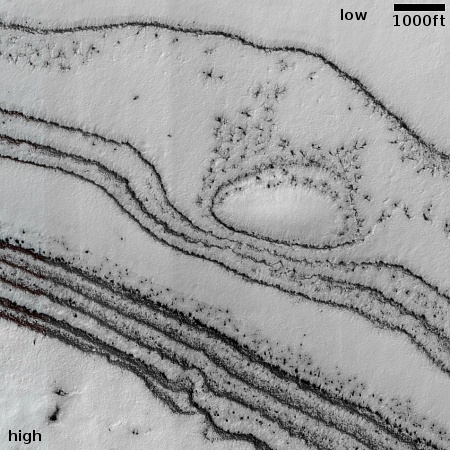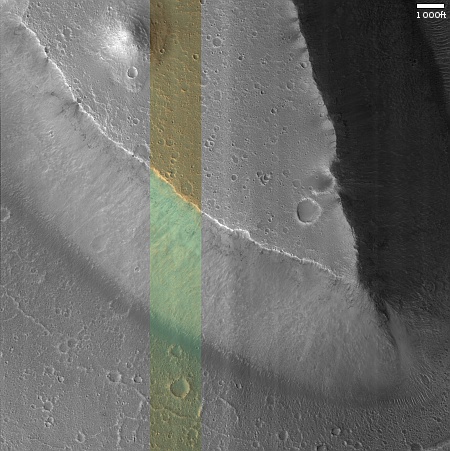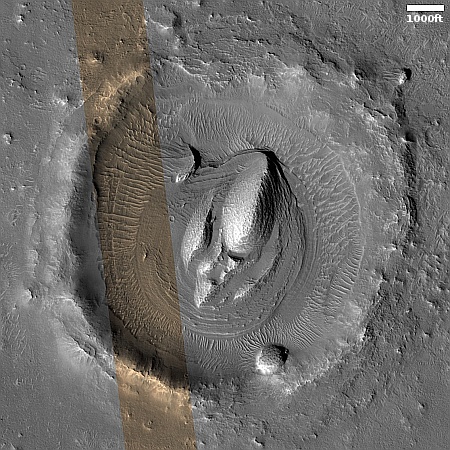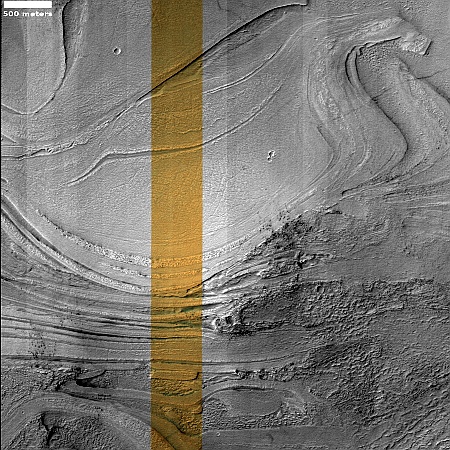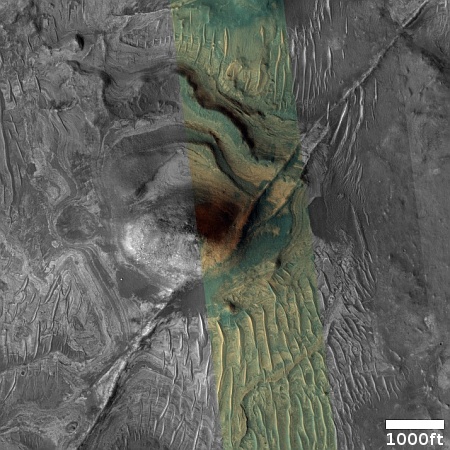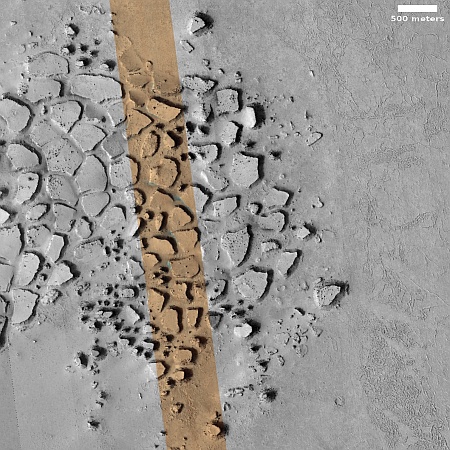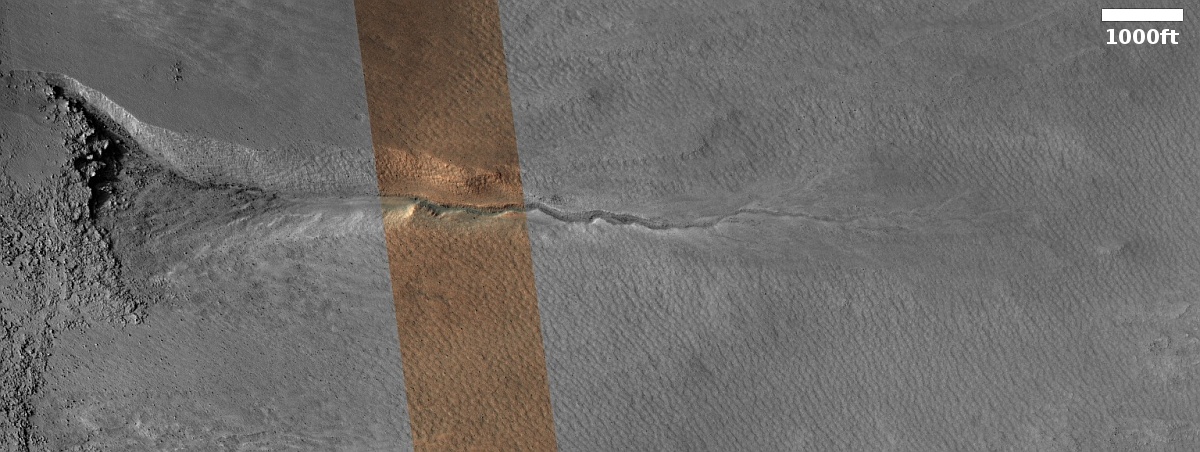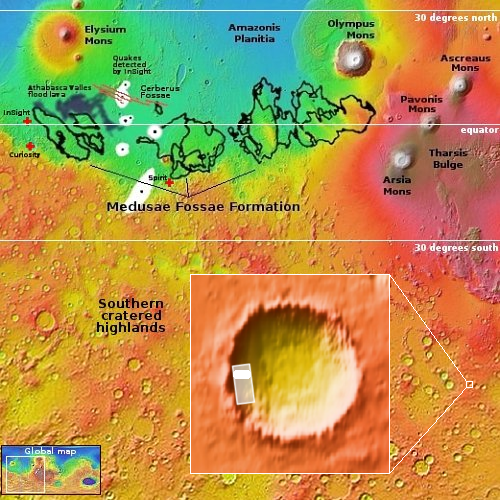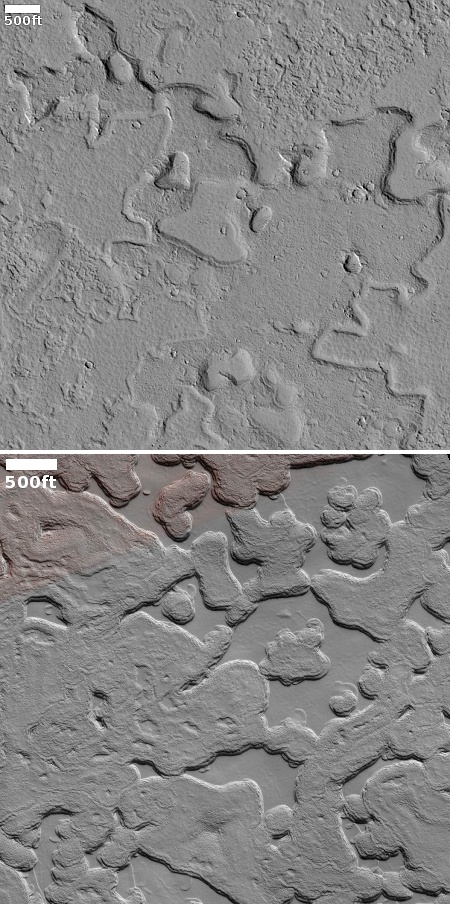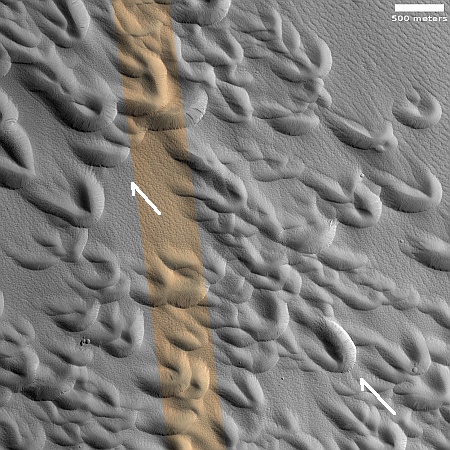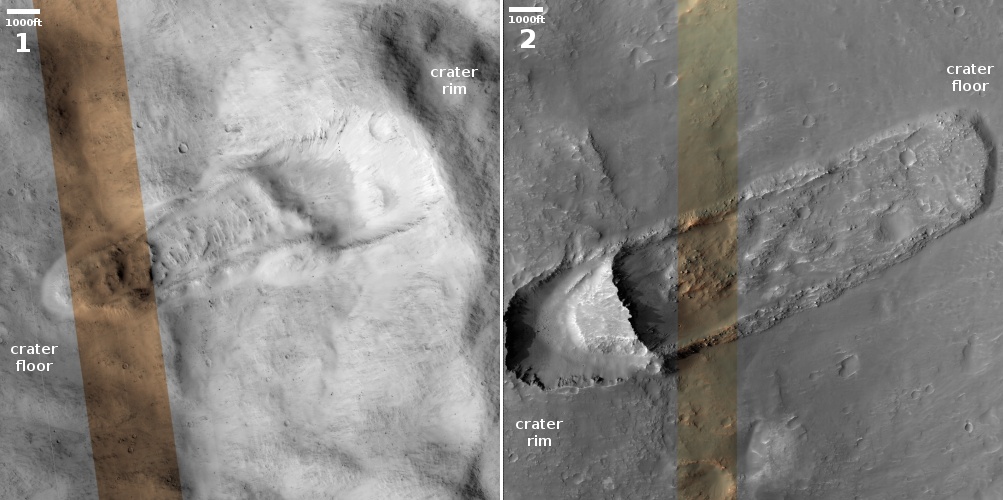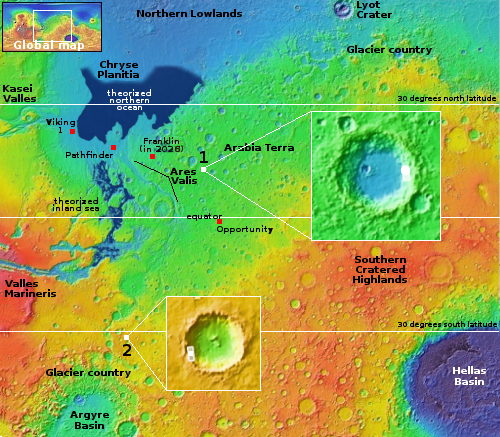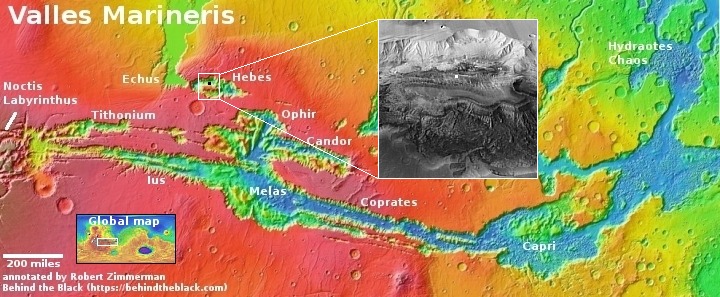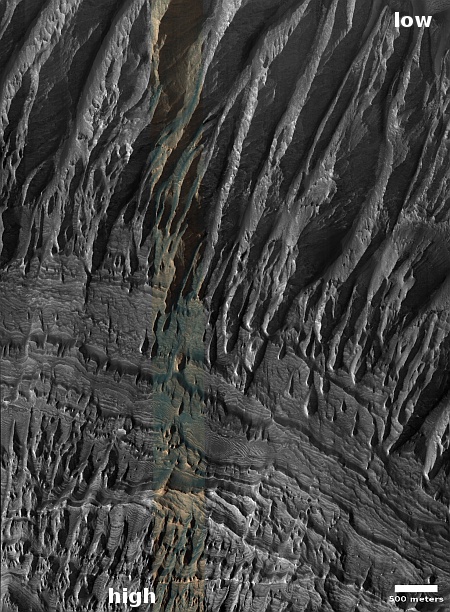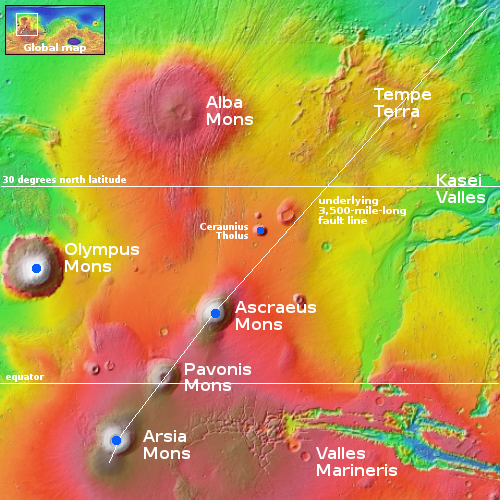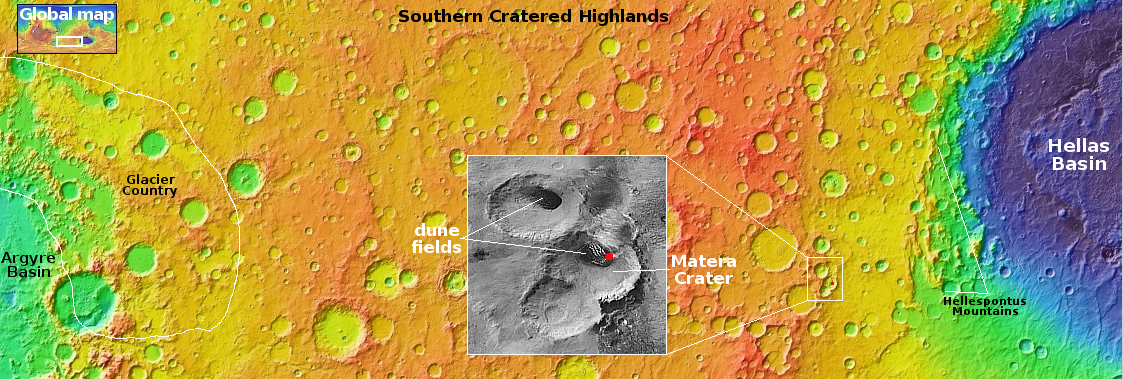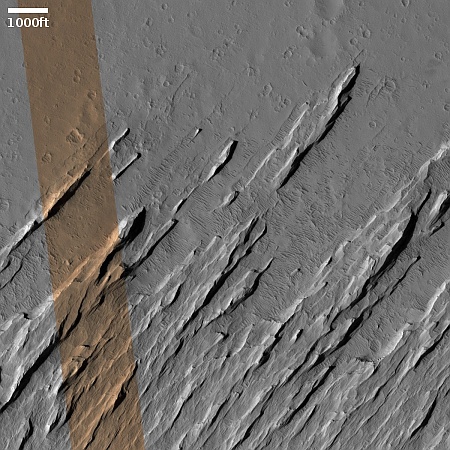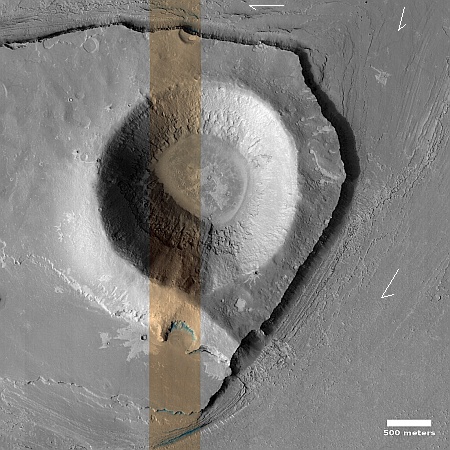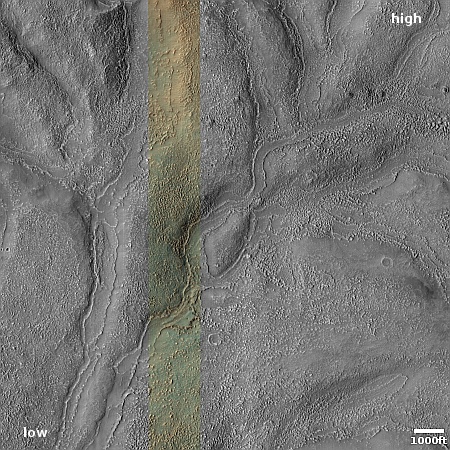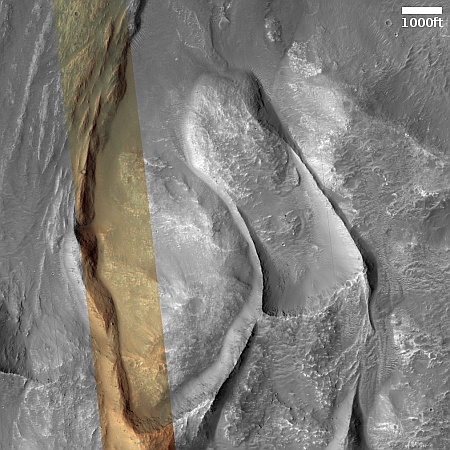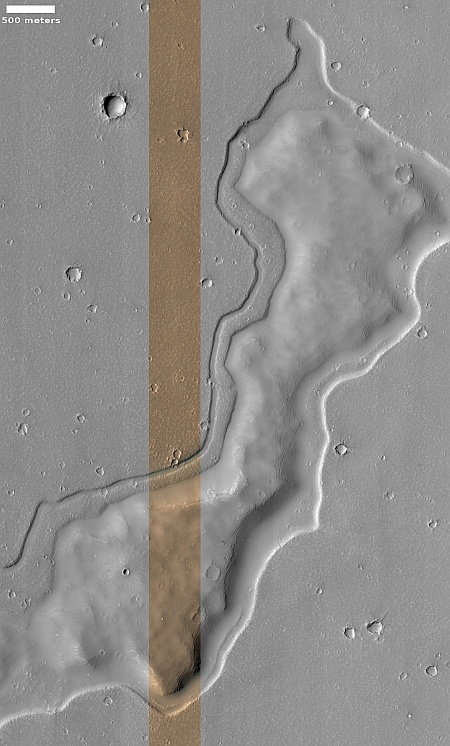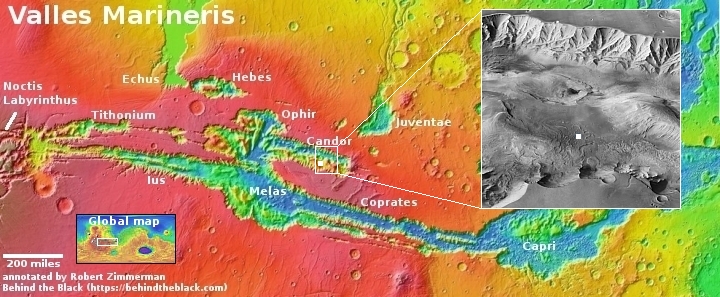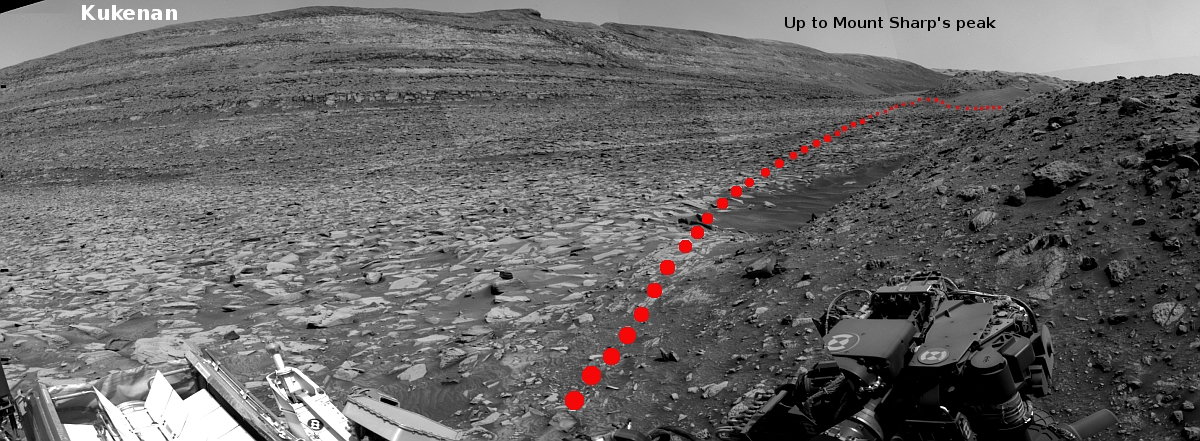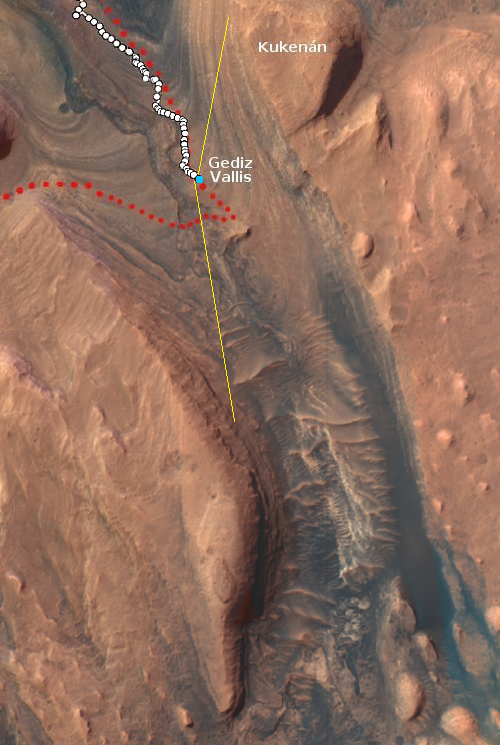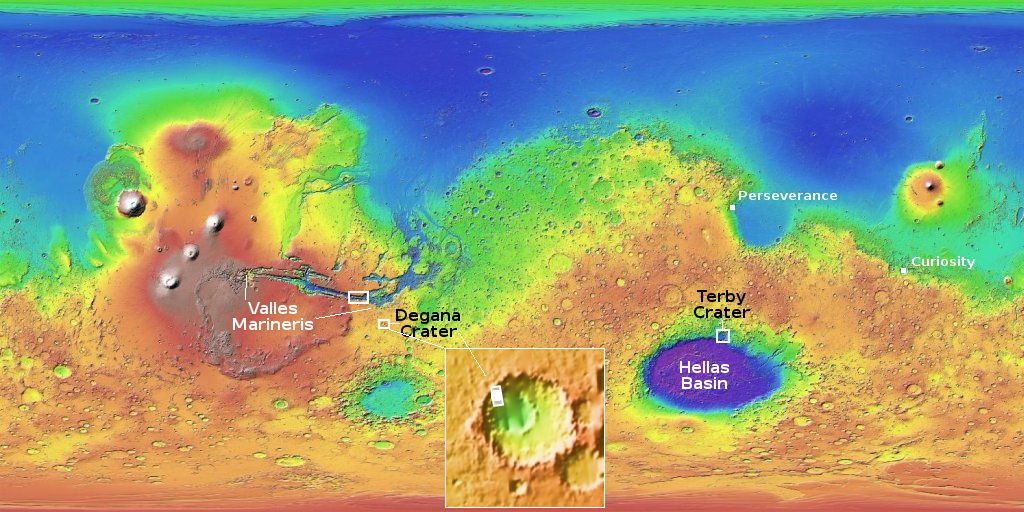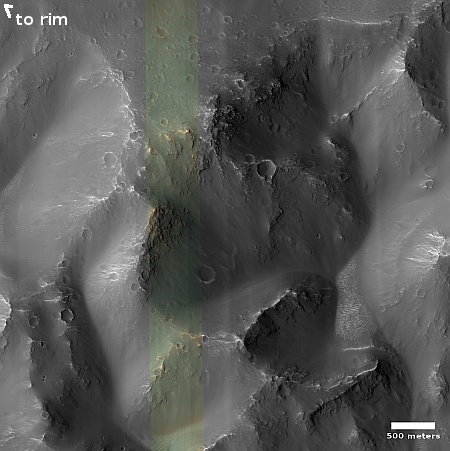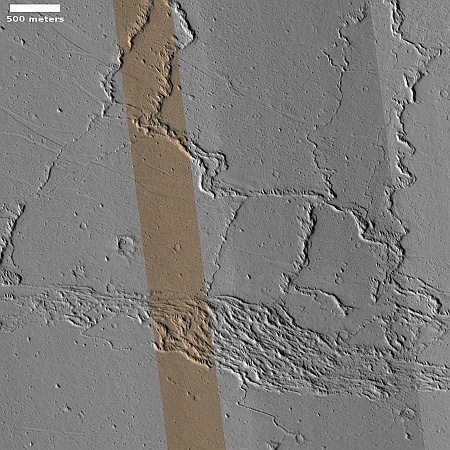Martian gullies flowing down to a Martian river of ice
Cool image time! The picture to the right, cropped, reduced, and sharpened to post here, was taken on May 16, 2024 by the high resolution camera on Mars Reconnaissance Orbiter (MRO).
The scientists label this as “gullies previously identified in the walls of Harmakhis Vallis.” The gullies are obvious, the series of erosion features on the cliff wall. The cliff itself drops about 2,800 feet from the rim to the floor, and also appears to have internal horizontal layers that the gullies cut through.
What causes the gullies? Planetary scientists have a number of theories, none of which appear to explain the gullies everywhere on the Martian surface. They all appear in the mid-latitudes, where the most glaciers on Mars are found, and appear to be related to ice or frost freeze-thaw processes, with some gullies actually very ancient and formed when the planet’s rotational tilt was significantly different.
» Read more
Cool image time! The picture to the right, cropped, reduced, and sharpened to post here, was taken on May 16, 2024 by the high resolution camera on Mars Reconnaissance Orbiter (MRO).
The scientists label this as “gullies previously identified in the walls of Harmakhis Vallis.” The gullies are obvious, the series of erosion features on the cliff wall. The cliff itself drops about 2,800 feet from the rim to the floor, and also appears to have internal horizontal layers that the gullies cut through.
What causes the gullies? Planetary scientists have a number of theories, none of which appear to explain the gullies everywhere on the Martian surface. They all appear in the mid-latitudes, where the most glaciers on Mars are found, and appear to be related to ice or frost freeze-thaw processes, with some gullies actually very ancient and formed when the planet’s rotational tilt was significantly different.
» Read more

